Insight Blog
Agility’s perspectives on transforming the employee's experience throughout remote transformation using connected enterprise tools.
12 minutes reading time
(2326 words)
What is an employee directory?
An employee directory is a centralized database or listing within an organization that contains information about its employees.
An employee directory is a centralized database or listing within an organization that contains information about its employees.
This directory typically includes details such as employees' names, contact information, job titles, departments, and sometimes additional information like photographs, office locations, and departmental affiliations.
It serves as a valuable resource for employees to find and connect with their colleagues and for the organization to manage its workforce effectively. Employee directories are often digital, accessible through company intranets or internal communication platforms, making it easy for employees to search and access this information.
Certain directories may also incorporate additional details like employee biographies and interesting facts, and video bios.
Over time, employee directories have evolved from primarily manual, paper-based systems to digital, online iterations.
Nowadays, many employee intranet platforms include directory features, streamlining and automating the process of creating and maintaining employee directories.
Employee Directory
As per a McKinsey report, employees dedicate approximately 1.8 hours daily, which accumulates to around 9.3 hours per week on average, to searching for and collecting information.
To put it differently, while businesses employ five individuals, only four are actively engaged in their work. The fifth employee is occupied with searching for answers or search for people, thus not contributing any value to the organization. This data is from July 19, 2023.
Employee directories can range from basic lists of contact information to more advanced databases that include personal details like nicknames, pronouns, photos, skills, biographies, birthdays, locations, projects, and work experience.
In the past, employee directories were often printed and physically distributed to employees, a process that was time-consuming, resource-intensive, and quickly rendered obsolete.
Subsequently, employee directories transitioned into digital formats. Many organizations still use Excel spreadsheets to create and manage them, distributing updates via email. However, this method involves substantial manual effort and necessitates frequent distribution of new versions.
Today, the majority of employee directories exist in the form of digital software applications. These applications are cloud-based, providing accessibility to employees on any device, from anywhere in the world.
Here are some of the terms people commonly use to refer to their employee directory:
- Staff directory
- People directory
- Corporate directory
- Corporate address book
- Company address book
- Employee list
- Employee photo directory
- Org chart
- Company phone book
- Company directory
- Workplace directory
- Team directory
- Workforce directory
- Employee database
Some organizations may also use more specific terms, such as:
- Sales directory
- Engineering directory
- Marketing directory
- Customer support directory
- Product directory
- Finance directory
- HR directory
- Legal directory
- IT directory
Ultimately, the specific term used to refer to an employee directory will vary depending on the organization's size, culture, and industry.
At AgilityPortal, we frequently liken an employee directory to your company's map. It serves as a digital representation or virtual guide of your organization, encapsulating its people, offices, locations, expertise, and the interconnections between them.
In essence, regardless of the terminology you use for your corporate staff contact directory or list software, the ultimate objective remains consistent: facilitating seamless connections among your staff, making it easier for them to connect with their colleagues.
Why is having an employee directory so important?
Let's face it, up until now, your company has likely been functioning adequately without one.
Unlike your critical accounting or email software, your employee directory software might not have occupied a top spot on your list of essential tools. After all, it's essentially a list of phone numbers, right?But let's consider your current setup: your accounting software is in place, email is running smoothly, people are enthusiastic about your collaboration tools like Teams and Slack, and all the other vital tools you've carefully integrated are fulfilling their functions.
So, what's the next step?
What's the next solution you could introduce that would almost instantly enhance efficiency across your entire organization?
Aside from serving as a centralized repository for crucial employee details, employee directories offer several other advantages:
- New Hire Onboarding: Employee directories play a pivotal role in guiding new hires, acquainting them with the organization, and seamlessly integrating them into the company.
- Collaboration: By providing contact information for all members within an organization, employee directories foster collaboration and break down silos. This accessibility ensures that individuals can easily connect with and collaborate with their colleagues.
- Company Culture: Recognizing that a sense of belonging is a potent driver of employee engagement, employee directories prove to be essential tools for facilitating connections and nurturing a vibrant company culture among employees.
What employee information should be included in a directory?
When creating an employee directory, it's important to include a range of essential information to ensure it serves its intended purpose effectively. The key employee information to include in a directory typically consists of:
- Name: The full name of each employee.
- Department or Team: Information about the specific department, team, or unit to which the employee belongs within the organization.
- Job Title: The official job title or position held by the employee.
- Email Address: The primary email address used for work-related communication.
- Phone Number: A contact number, such as a direct line or extension, to facilitate communication.
- Location: If your organization has multiple offices or physical locations, specifying the employee's work location can be valuable.
- Photograph: Including a photo of the employee can help colleagues recognize and connect with each other.
- Skills: Listing specific skills or expertise possessed by the employee can aid in identifying subject matter experts within the organization.
- Biography: A brief description or biography can provide insights into an employee's background, experience, or interests.
- Birthdays: Recognizing employees' birthdays can contribute to a positive and engaging workplace culture.
- Anniversaries: Marking employees' work anniversaries is another way to foster a sense of appreciation and belonging.
- Projects: Identifying the projects or initiatives an employee is involved in can encourage collaboration and knowledge sharing.
- Work Experience: Highlighting an employee's work history, including previous roles and relevant experience, can provide valuable context.
Including these details in an employee directory ensures that it not only serves as a contact list but also as a resource for promoting engagement, collaboration, and a sense of community within the organization.
Follow us and access great exclusive content everyday: Follow us on Google News
How can you create an employee directory?
In the past, companies used to create employee directories manually, which was a labor-intensive process.
However, with the advent of HR technology, this task has become significantly more streamlined and efficient.
For instance, software solutions like AgilityPortal's Core HR offer a user-friendly platform for swiftly establishing an online directory.
This online directory allows for easy employee search, providing access to essential information such as employee photos, job titles, reporting relationships, and the ability to filter by site, department, or team.
This online directory allows for easy employee search, providing access to essential information such as employee photos, job titles, reporting relationships, and the ability to filter by site, department, or team.
Additionally, the employee directory app fosters connections among employees by enabling them to share additional details like hobbies, unique skills, gender pronouns, nationality, work location, or any other categories that can enhance collaboration and engagement.
Ways to Use an Employee Directory
Employee directories should be an integral component of modern HR strategy for several compelling reasons:
- Enhanced Communication: Employee directories facilitate seamless communication by providing quick access to contact information, enabling employees to connect with their colleagues easily.
- Onboarding: They assist in the onboarding process, helping new hires familiarize themselves with their teammates and the broader organization.
- Collaboration: Employee directories eliminate silos by offering contact details for everyone in the organization. This accessibility encourages collaboration, fostering a culture of knowledge sharing and teamwork.
- Efficiency: They improve efficiency by enabling employees to find the right person or expert quickly, reducing the time spent searching for information.
- Company Culture: Employee directories promote a sense of belonging and community within the organization. Employees can learn more about their coworkers, fostering camaraderie and a positive company culture.
- Personalization: They allow employees to personalize their profiles with information like skills, hobbies, and pronouns, helping colleagues connect on a more personal level.
- Centralization: Modern HR strategies aim to centralize information and tools. Employee directories align with this goal by providing a single location for employee data, reducing the need for scattered resources.
- Data-Driven Decisions: They provide valuable insights into employee demographics and skills, which can inform HR decisions and talent management strategies.
- Accessibility: In today's digital age, remote work and global teams are common. Employee directories ensure that employees can access contact information from anywhere, on any device.
Incorporating employee directories into the HR strategy demonstrates a commitment to effective communication, collaboration, and fostering a strong company culture. It ultimately contributes to a more engaged and connected workforce, aligning with the goals of modern HR practices.
You may also like: Best Apps for Employees: UPDATED 2022 – A Complete Guide
How do you use an employee directory?
Typical scenarios where an employee directory proves valuable comprise:
- Onboarding New Team Members: New hires can quickly acquaint themselves with their fellow colleagues, aiding in their integration into the organization.
- Efficient Contact Retrieval: Employees can readily access contact details, streamlining communication and collaboration within the workplace.
- Optimizing Workflows: Identifying the most suitable person to assist with specific tasks becomes more efficient, enhancing overall workflow productivity.
People search
At the heart of every employee directory lies its primary function: searching for individuals.
Therefore, it's imperative that your employee directory incorporates features that streamline the process of searching your central "people database" and present the results in a user-friendly manner.
Key components commonly found in a standard employee directory include:
Key components commonly found in a standard employee directory include:
- Search Box: An intuitive search box that allows users to input search queries.
- Alphabetical A-Z Index: An alphabetical index, often represented by letters A to Z, simplifying navigation for users searching by name.
- Office and Department Listings: A section listing your various office locations and departments, aiding users in narrowing down their search criteria.
- Search Results Display Area: An area where search results are promptly presented to users, ensuring easy access to relevant profiles.
These features collectively enhance the functionality of your employee directory, making it a valuable tool for efficient people search and retrieval.
Many employee directory applications offer additional filtering capabilities, allowing users to refine their search results according to specific criteria. Moreover, these apps often provide multiple viewing options for displaying search results.
In the realm of modern employee directories, some even integrate data from other valuable sources, enabling users to search not only for individuals but also for offices, departments, skills, interests, job titles, and more.
This expanded functionality enhances the utility and versatility of these directories, making them comprehensive tools for effective information retrieval.
Free ebook: How To Get Your Intranet Off The Ground
Rich Employee profiles
An employee profile serves as an internal counterpart to a LinkedIn profile, designed exclusively for use within the company. It functions as a dedicated page showcasing comprehensive details about an individual and their position within the organizational hierarchy.
Employee profiles are generally accessible to all members of the company, and at a basic level, they encompass essential information like the individual's name, job title, office location, department, contact details, and a profile photo.
Employee profiles are generally accessible to all members of the company, and at a basic level, they encompass essential information like the individual's name, job title, office location, department, contact details, and a profile photo.
These profiles often encompass supplementary details such as a bio or "about me" section, personal interests, skills, date of birth, work anniversary, geographic location, and the identity of their immediate supervisor.
Employee profiles may also encompass additional information such as preferred pronouns, nicknames, professional background, educational history, project involvements, language proficiency, links to social media profiles, and even intriguing fun facts.
Org chart
Contemporary employee directories often feature an organizational chart view, commonly known as an "org chart," enabling users to visualize the hierarchical arrangement of individuals within the company's organizational structure.
Benefits Of An Employee Directory
An employee directory serves as a centralized resource housing comprehensive information about every employee within a company.
Typically, it includes crucial details like the employee's name, job title, department, contact information, and other relevant particulars. Employee directories offer benefits to both employees and managers, enhancing communication, streamlining onboarding, and fostering relationships.
Here are some key advantages of utilizing an employee directory:
In summary, an employee directory is a valuable tool applicable to businesses of all sizes, with the potential to enhance communication, collaboration, productivity, and employee engagement.
Here are some key advantages of utilizing an employee directory:
- Enhanced Communication and Collaboration: Employee directories simplify the process of locating and reaching out to colleagues, whether they belong to the same department or work across various company divisions. This ease of communication promotes collaboration on projects, tasks, and other initiatives.
- Streamlined Onboarding: New hires can quickly familiarize themselves with the company's organizational structure, meet their coworkers, and access the necessary resources through the employee directory, expediting the onboarding process.
- Relationship Building: Employee directories facilitate deeper connections among employees, enabling them to get to know each other on a more personal level, thereby creating a more positive and cohesive work environment.
- Increased Productivity: By simplifying communication and collaboration, employee directories contribute to heightened productivity levels among employees.
- Cost Reduction: Employee directories assist in cost reduction by diminishing expenses associated with new hire onboarding, employee training, and the production and distribution of company phone books.
Furthermore, employee directories can be instrumental in achieving specific goals, such as:
- Promoting Diversity and Inclusion: Employee directories encourage diversity and inclusion by providing employees with insights into the varied backgrounds and experiences of their colleagues.
- Fostering Employee Engagement: Employee directories facilitate employee engagement by offering a platform for employees to connect with one another and gain a deeper understanding of the company's mission and values.
- Supporting Remote Work: In the context of remote work, employee directories empower employees to stay connected with their colleagues and access vital company information from any location.
In summary, an employee directory is a valuable tool applicable to businesses of all sizes, with the potential to enhance communication, collaboration, productivity, and employee engagement.
Book a demo of our employee app today to see how you can build your very own Enterprise Social Network, and keep all employees engaged in one place.
Categories
Blog
(2618)
Business Management
(323)
Employee Engagement
(212)
Digital Transformation
(175)
Growth
(119)
Intranets
(115)
Remote Work
(61)
Sales
(48)
Collaboration
(36)
Project management
(29)
Culture
(28)
Customer Experience
(26)
Knowledge Management
(21)
Leadership
(20)
Comparisons
(6)
News
(1)
Ready to learn more? 👍
One platform to optimize, manage and track all of your teams. Your new digital workplace is a click away. 🚀
Free for 14 days, no credit card required.



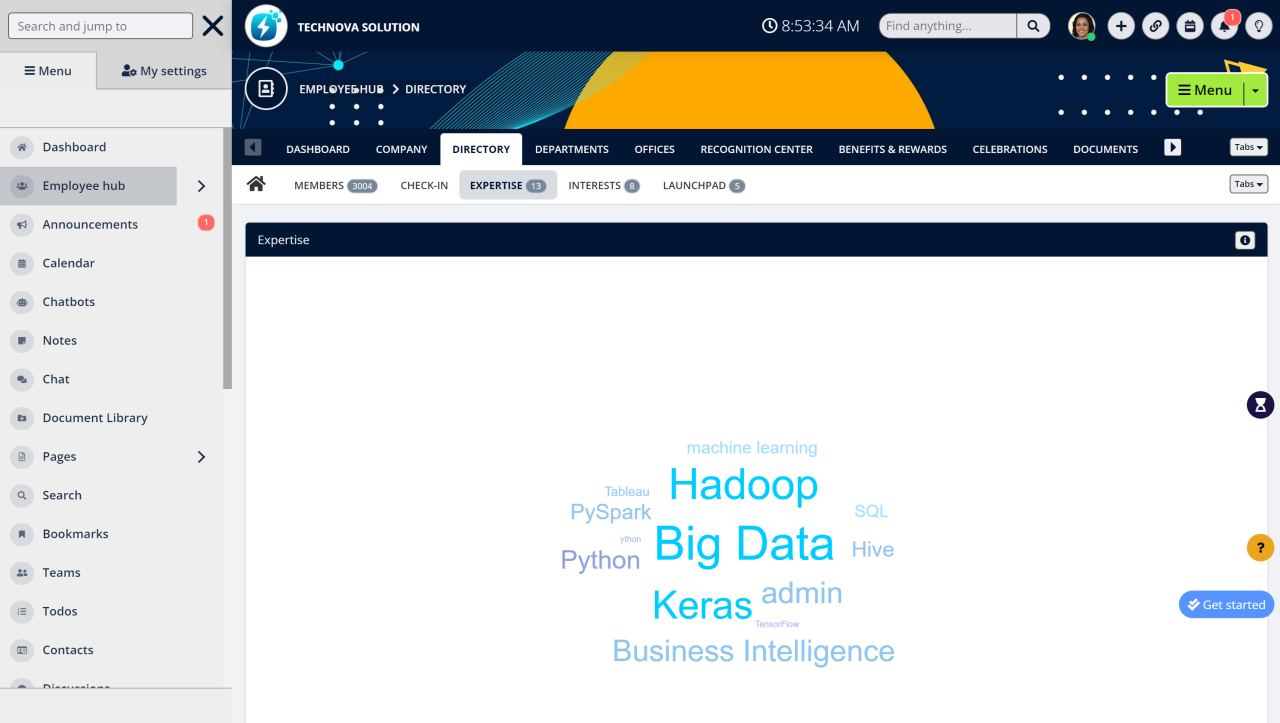
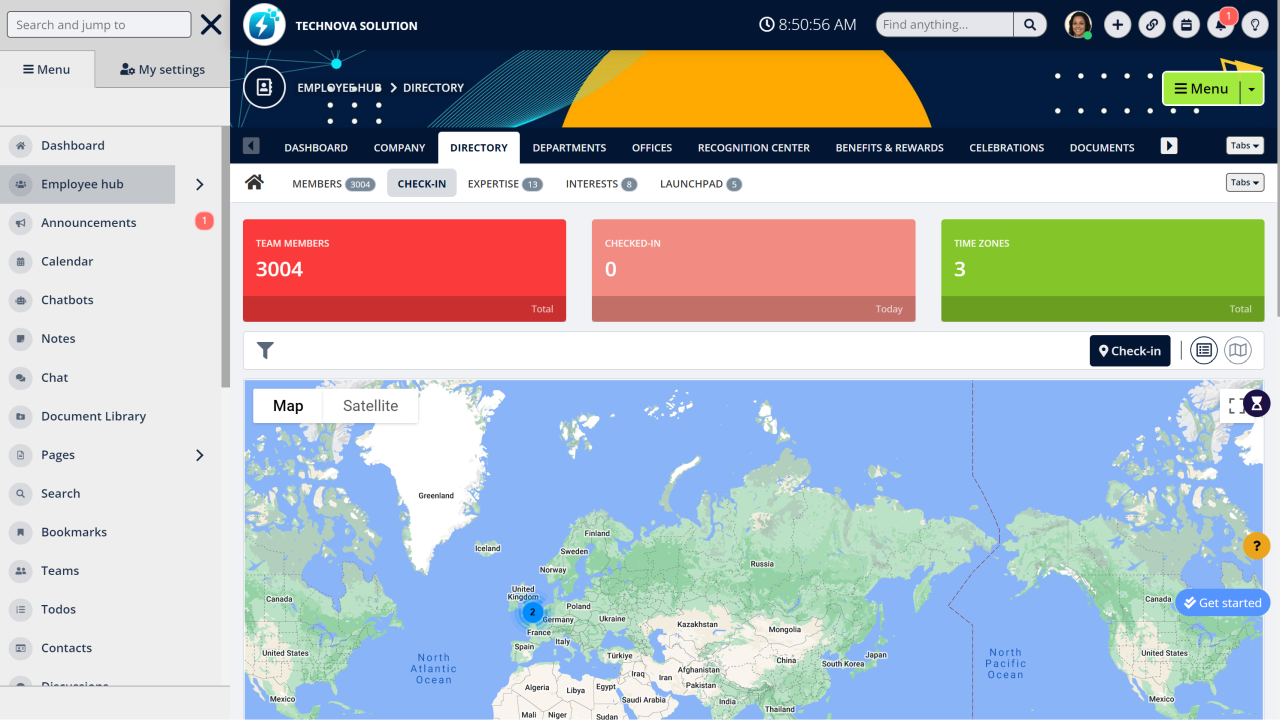
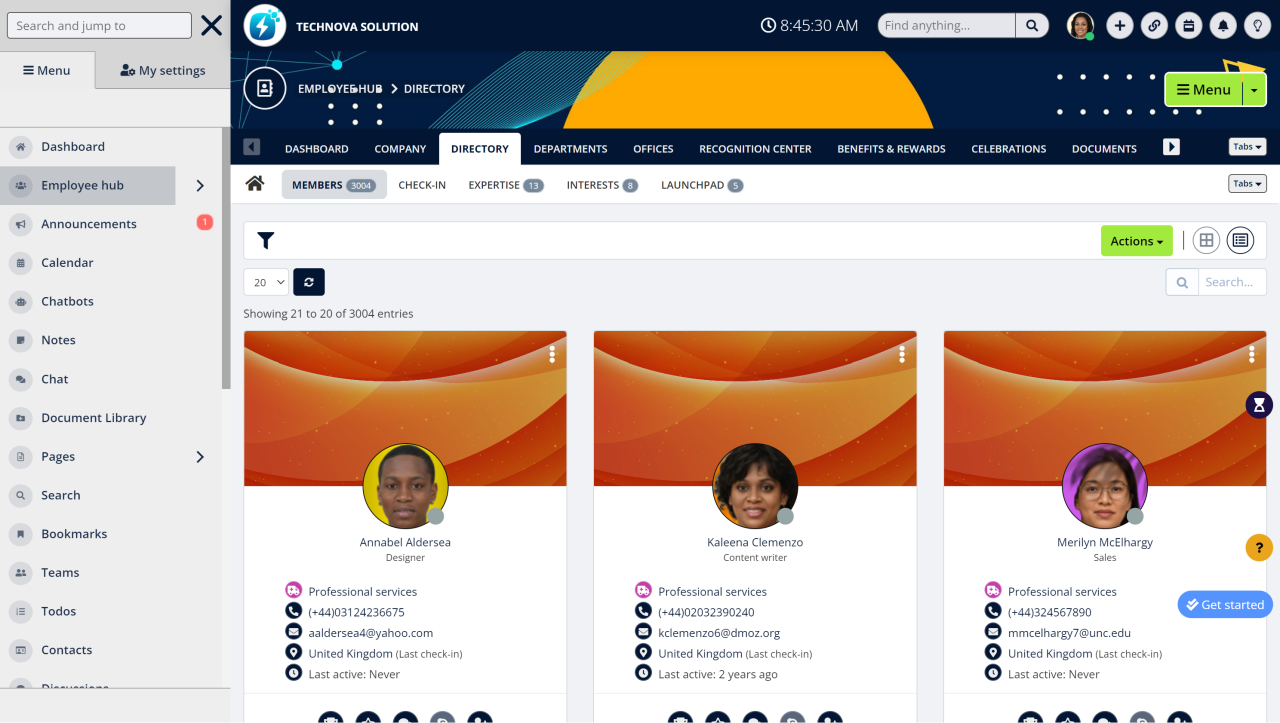
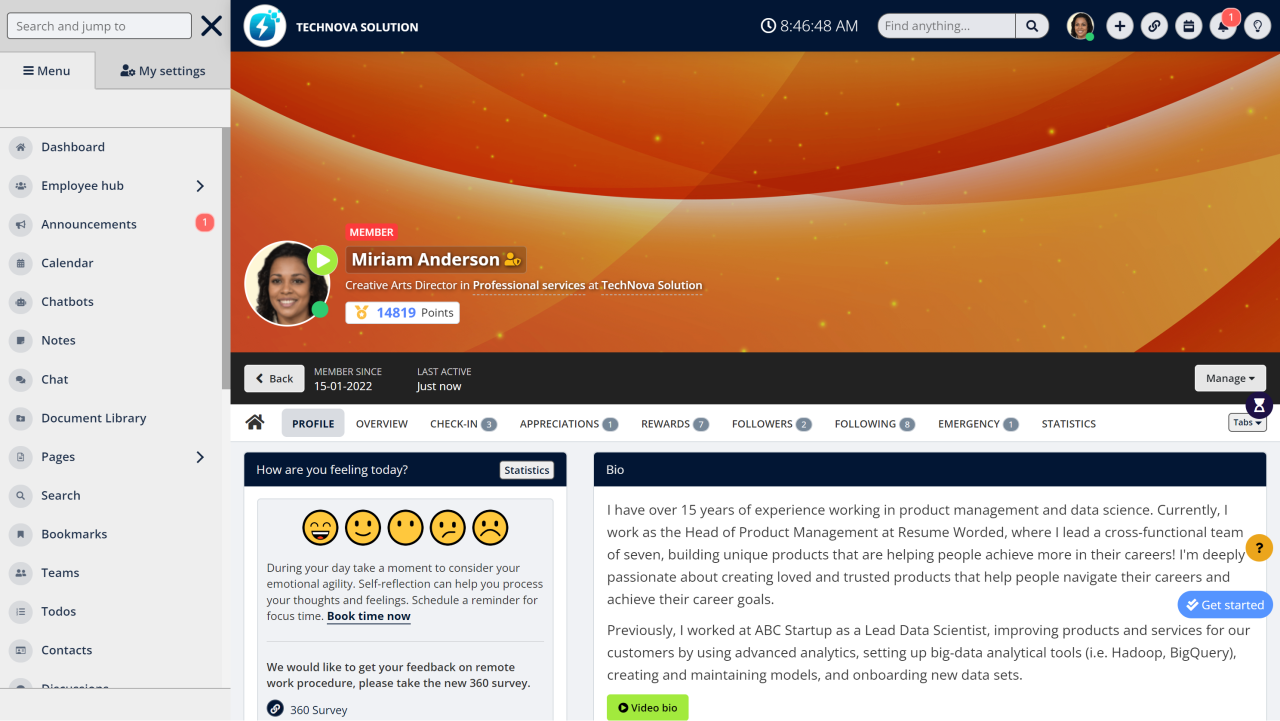
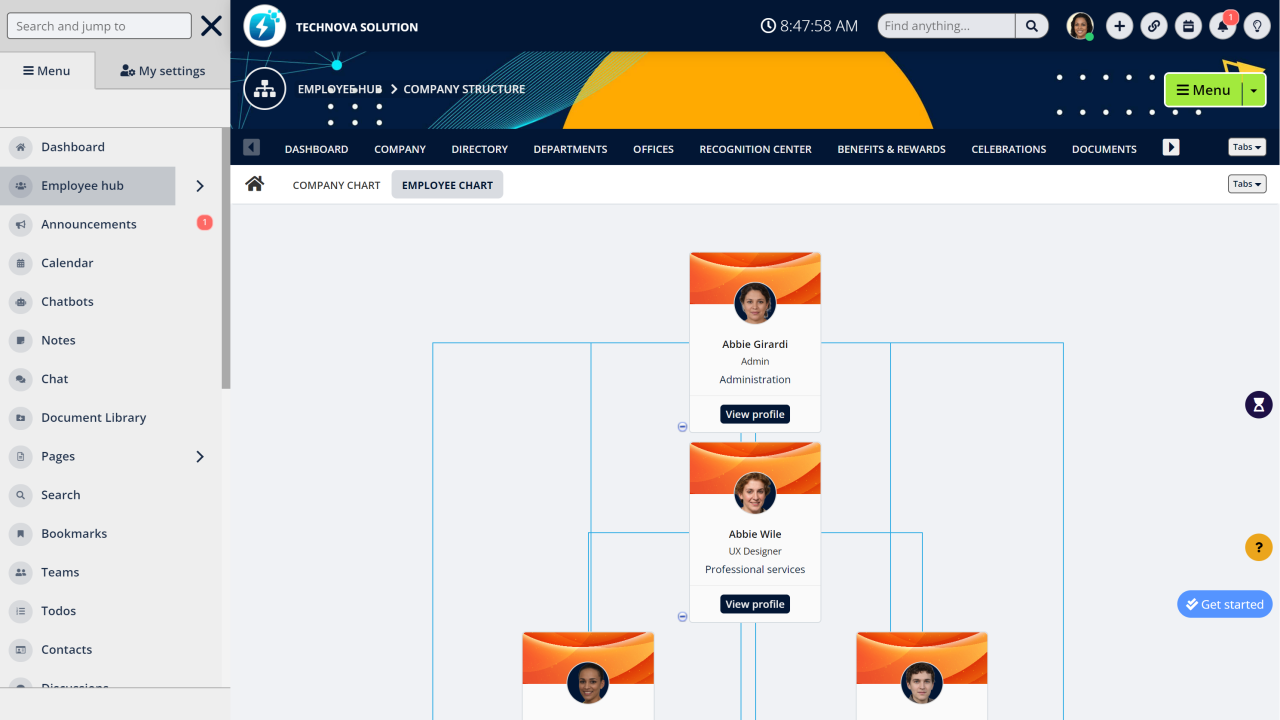





![What Is an Intranet for Business? [2026 Guide] What Is an Intranet for Business? [2026 Guide]](http://agilityportal.io/images/easyblog_articles/1496/b2ap3_thumbnail_What-Is-an-Intranet-for-Business.png)




